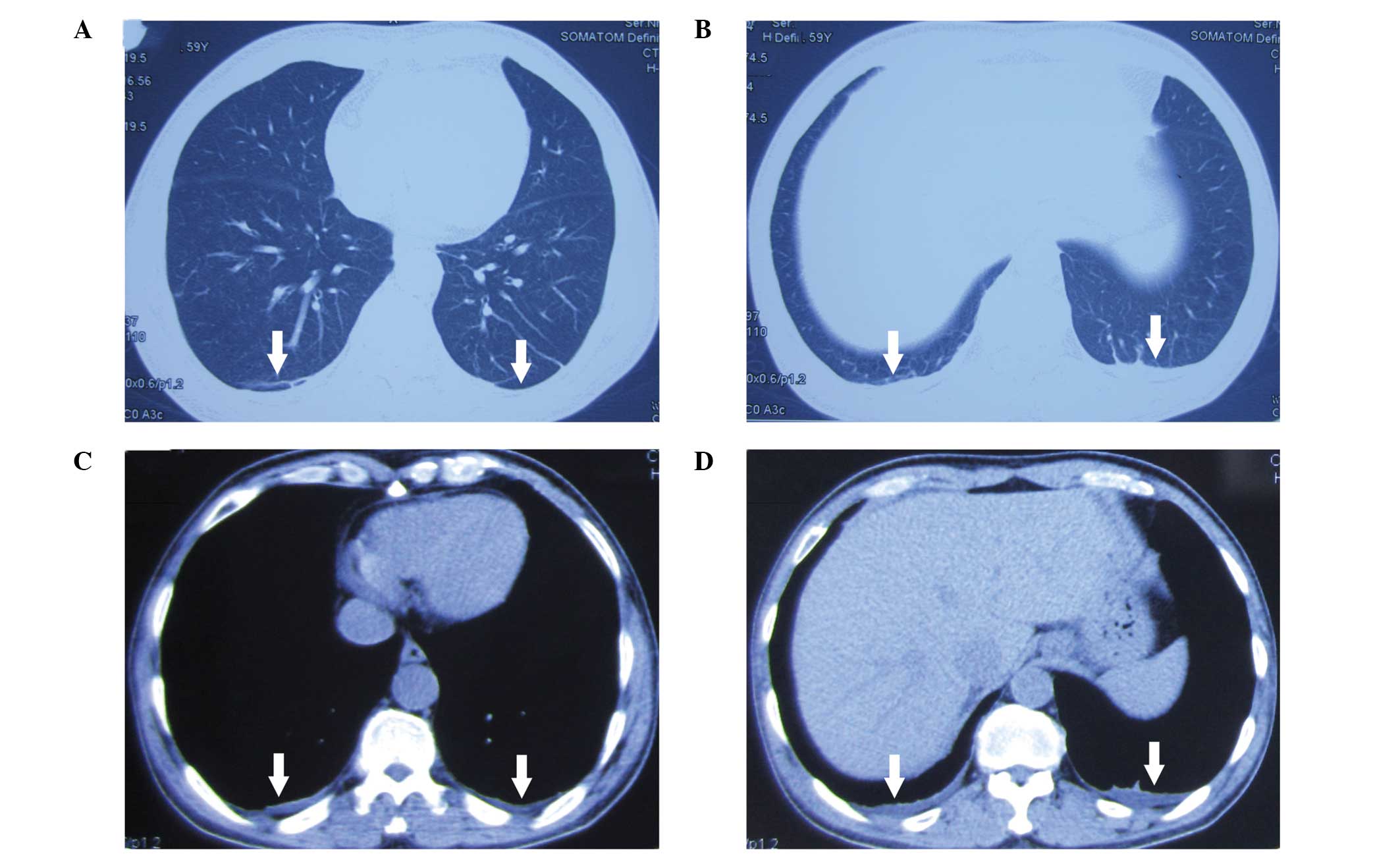Acute paraquat poisoning with sinus bradycardia: A case report
- Authors:
- Chengzhen Song
- Baotian Kan
- Guangcai Yu
- Xiangdong Jian
- Jieru Wang
- Jing Sun
View Affiliations
Affiliations: Department of Poisoning and Occupational Diseases, Qilu Hospital of Shandong University, Jinan, Shandong 250012, P.R. China
- Published online on: September 2, 2014 https://doi.org/10.3892/etm.2014.1944
-
Pages:
1459-1462
Metrics: Total
Views: 0 (Spandidos Publications: | PMC Statistics: )
Metrics: Total PDF Downloads: 0 (Spandidos Publications: | PMC Statistics: )
This article is mentioned in:
Abstract
Paraquat (PQ) is a highly toxic herbicide, which not only leads to acute organ damage, but also to a variety of complications. Patients with severe PQ‑induced poisoning may succumb to multiple organ failure involving the circulatory and respiratory systems. Although numerous studies have been performed investigating PQ poisoning, cases of extreme bradycardia caused by acute PQ‑induced poisoning are rare. In the present case report, a 59-year‑old male who ingested PQ was admitted to the Department of Poisoning and Occupational Disease at Qilu Hospital of Shandong University (Jinan, China) after three days. The patient received treatment known as the ‘Qilu scheme’, which was established in the Department of Poisoning and Occupational Disease. However, the heart rate of the patient remained low following the administration of conventional medicines, until thyroid tablets were administered. To the best of our knowledge, cases of bradycardia following PQ poisoning are rare.
View References
|
1
|
Bullivant CM: Accidental poisoning by
paraquat: Report of two cases in man. Br Med J. 21:1272–1273. 1966.
View Article : Google Scholar : PubMed/NCBI
|
|
2
|
Arts J, Schuit G, Schipper A and Kleij van
der B: A case report of PQ poisoning. Eur J Hosp Pharm. 12:22–24.
2006.
|
|
3
|
Bertram A, Haenel SS, Hadem J, Hoeper MM,
et al: Tissue concentration of PQ on day 32 after intoxication and
failed bridge to transplantation by extracorporeal membrane
oxygenation therapy. BMC Pharmacol Toxicol. 14:452013. View Article : Google Scholar : PubMed/NCBI
|
|
4
|
Yin Y, Guo X, Zhang SL and Sun CY:
Analysis of paraquat intoxication epidemic (2002–2011) within
China. Biomed Environ Sci. 26:509–512. 2013.PubMed/NCBI
|
|
5
|
Jian X, Zhang H, Sui H, Guo G, et al: Qilu
Scheme of PQ poisoning treatment. Chinese Journal of Industrial
Medicine. 27:119–121. 2014.(In Chinese).
|
|
6
|
Kang MS, Gil HW, Yang JO, Lee EY and Hong
SY: Comparison between kidney and hemoperfusion for paraquat
elimination. J Korean Med Sci. 24:S156–S160. 2009. View Article : Google Scholar : PubMed/NCBI
|
|
7
|
Magnani JW and Dec GW: Myocarditis current
trends in diagnosis and treatment. Circulation. 113:876–890. 2006.
View Article : Google Scholar : PubMed/NCBI
|
|
8
|
Van der Heyden JT, Docter R, Van Toor H
and Wilson JH: Effects of caloric deprivation on thyroid hormone
tissue uptake and generation of low-T3 syndrome. Am J Physiol.
251:E156–E163. 1986.PubMed/NCBI
|
|
9
|
Pingitore A, Galli E, Barison A, Lervasi
A, et al: Acute effects of triiodothyronine (T3) replacement
therapy in patients with chronic heart failure and low-T3 syndrome:
a randomized, placebo-controlled study. J Clin Endocrinol Metab.
93:1351–1358. 2008. View Article : Google Scholar : PubMed/NCBI
|
|
10
|
Pfister R, Strack N, Wielckens K, Malchau
G, et al: The relationship and prognostic impact of low-T3 syndrome
and NT-pro-BNP in cardiovascular patients. Int J Cardiol.
144:187–190. 2010. View Article : Google Scholar : PubMed/NCBI
|












